|
|||||||||||||||||||||||||||||||||||||||||||||||||||||||||||||||||||||||||||||||||||||||||||||||||||||||||||||||||||||||||||||||||||||||||||||||||||||||||
|
Копия страницы с документацией по MimeTex
Время создания: 15.01.2020 17:23
Текстовые метки: формулы, mimetex, документация
Раздел: Компьютер - Программирование - Язык C (Си) - Библиотека MimeTeX
Запись: xintrea/mytetra_syncro/master/base/157909822044s1c8zn8a/text.html на raw.githubusercontent.com
|
|||||||||||||||||||||||||||||||||||||||||||||||||||||||||||||||||||||||||||||||||||||||||||||||||||||||||||||||||||||||||||||||||||||||||||||||||||||||||
|
|
|||||||||||||||||||||||||||||||||||||||||||||||||||||||||||||||||||||||||||||||||||||||||||||||||||||||||||||||||||||||||||||||||||||||||||||||||||||||||
Copyright © 2002-2006, John Forkosh Associates, Inc.
(a) IntroductionMimeTeX, licensed under the gpl , lets you easily embed LaTeX math in your html pages. It parses a LaTeX math expression and immediately emits the corresponding gif image, rather than the usual TeX dvi. And mimeTeX is an entirely separate little program that doesn't use TeX or its fonts in any way. It's just one cgi that you put in your site's cgi-bin/ directory, with no other dependencies. So mimeTeX is very easy to install . And it's equally easy to use. Just place an html <img> tag in your document wherever you want to see the corresponding LaTeX expression. For example, <img src="../cgi-bin/mimetex.cgi?f(x)=\int_{-\infty}^xe^{-t^2}dt" alt="" border=0 align=middle> immediately generates the corresponding gif image on-the-fly, displaying mimeTeX plugins...There's no inherent need to repeatedly write the cumbersome <img> tag illustrated above. You can write your own custom tags , or write a wrapper script around mimeTeX to simplify the notation. For example, PmWiki has a mimeTeX plugin that lets you just write {$ f(x)=\int_{-\infty}^xe^{-t^2}dt $} to obtain the same image. Similarly,
Or, if you're using phpBB , then Jameson contributed the following typical one-line mod that lets you just write [tex] ... [/tex] to obtain mimeTeX images: #--------[open]----------------------------------------------------- /includes/bbcode.php #--------[find]----------------------------------------------------- // Remove our padding from the string.. #--------[before, add]---------------------------------------------- $text = preg_replace('/\[tex\](.*?)\[\/tex\]/ie', "'<img src=\"/cgi-bin/mimetex.cgi?'.rawurlencode('$1').'\" align=\"middle\" />'", $text); (Please note: Please don't write php code using system( ), or any other shell escape mechanism, just to cache images. Use mimeTeX's -DCACHEPATH=\"path/\" compile option instead. system( ) raises security issues, either real ones if used carelessly, or just in the minds of system administrators. Either way, I've received many emails from people unable to use mimeTeX because of unnecessary system( ) calls prohibited by security-conscious sysadmins. MimeTeX itself poses minimal risk when used as illustrated above, but you're responsible for any plugin/wrapper script you write around it.) Alternative solutions...MimeTeX's benefit over similar math-on-the-web solutions is, as mentioned above, its very easy installation. But if that's not a problem for you, and if your site's server already has a LaTeX distribution installed, and suitable image conversion utilities like ImageMagick , then you may prefer to look at a math rendering script like latexrender which uses LaTeX to create higher quality images than mimeTeX currently produces. For comparison,
Similar LaTeX-based solutions that you may want to look at are textogif and gladTeX . Additional discussion and several more links are at www.tug.org/interest.html and in the tex-faq . (b) QuickStartMimeTeX is as TeX-like as possible (though not 100% compliant), and you must already be familiar with LaTeX math markup to use it. If you're not, many online LaTeX turorials are readily available. You may also want to browse Andrew Roberts' Latex Math I and Latex Math II , or my own LaTeX math tutorial . Then, instead of continuing to read this page, you can just Submit any LaTeX math expression you like in the Query Box below. I've started you out with a little example already in the box, or you can Click any of the Examples below to place that corresponding expression in the Query Box. Meanwhile, here are just a few quickstart tips for Submitting your own mimeTeX expressions in the Query Box below (a detailed syntax overview and reference is provided by the complete mimeTeX manual ):
Now enter your own expression, use the sample provided, or Click any of the Examples . Then press the Submit button, and mimeTeX's rendering should be displayed in the little window immediately below it.
You should see (c) ExamplesHere are various additional random examples further demonstrating mimeTeX's features and usage. To see how they're done, Click any one of them to place its corresponding expression in the Query Box above. Then press Submit to re-render it, or you can edit the expression first to suit your own purposes. You may also want to look at a sample document prepared using mimeTeX to render equations.
(d) QuickBuild
mimeTeX's source code is ansi-standard C, and should compile and execute without any change. QuickBuild instructions below are for Unix. Modify them as necessary for your particular situation (note the -DWINDOWS switch if applicable). More detailed instructions comprise Section II of the complete manual. The steps needed to compile and install mimeTeX are:
Ascii dump of bitmap image... Hex dump of colormap indexes... ...........**....................**... ..........1**1...................1**1.. ..........*..*......*...........*..*.. ..........*23*......*............*23*.. .............*......*..............*.. .............*......*...............*.. ....****.....*......*.....*..*.....*.. ...1****....2*......*.....2*..*....2*.. ...*.*.*....*.......*....**..*....*... ...*.*.*...1*.......*.....**..*...1*... .....*.....*.*..********..*..*...*.*.. ....1*1...2*.*..********..3*..*..2*.*.. .....*....****......*.....*..*..****.. ....2*2...****......*......*12*..****.. ..*.*.*.............*.....*.*......... ..*.*.*.............*......*.*2........ ...****.............*.....***......... ..1****.............*......***......... ....................*.......*......... ....................*........*......... .........................*.*.......... ..........................*.*1......... .........................**........... ..........................**1.......... The 5 colormap indexes denote rgb vals... .-->255 1-->196 2-->186 3-->177 *-->0 Any problems with anything above? Read the more detailed instructions in Section II of the complete manual. Precompiled Binaries...Compiling your own mimeTeX executable from source is highly recommended. But if you don't have a compiler, or experience some other difficulty, then the following pre-compiled binaries are available. Each binary is the last file in a zip file named mimetex.zip, which also contains all the source files that were current when the binary was compiled. I can't be sure my binary will work on your machine. Unix binaries are usually named mimetex.cgi inside the mimetex.zip file, and others (e.g., Windows and VMS) are usually named mimetex.exe. Unzip and rename them as necessary for your own system.
After downloading, if you have "shell access", test your downloaded binary from the command line as described in the compile section above, to make sure it's the right binary for your system. If you see the two ascii rasters illustrated above, then your binary's good, so mv it to your server's cgi-bin/ directory and set permissions as necessary. But if your mimetex binary won't display ascii rasters from the command line, then it's not going to emit gifs from the server. Either find a compatible binary from the list above, or you'll have to find a way to compile your own binary from mimetex's source. Public mimeTeX server...If you have trouble installing mimeTeX on your own server, a public mimeTeX server is currently available. An <img> tag of the form <img src="http://www.forkosh.com/mimetex.cgi?c=\sqrt{a^2+b^2}" alt="" border=0 align=middle> will display (e) GPL License "My grandfather once told me there are two kinds of people:
|
|||||||||||||||||||||||||||||||||||||||||||||||||||||||||||||||||||||||||||||||||||||||||||||||||||||||||||||||||||||||||||||||||||||||||||||||||||||||||
|
Copyright © 2002-2006, John Forkosh Associates, Inc. |

|
|
|
|
|












 , whereas "
, whereas " .
.  at sizes
at sizes  at sizes
at sizes 







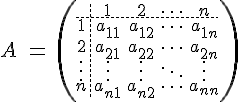
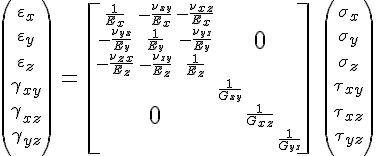

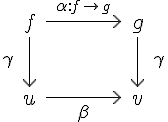
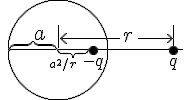
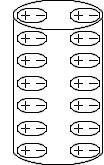


 in the upper-left corner of your window, just like clicking this link does, which tests my mimetex.cgi,
in the upper-left corner of your window, just like clicking this link does, which tests my mimetex.cgi, 








